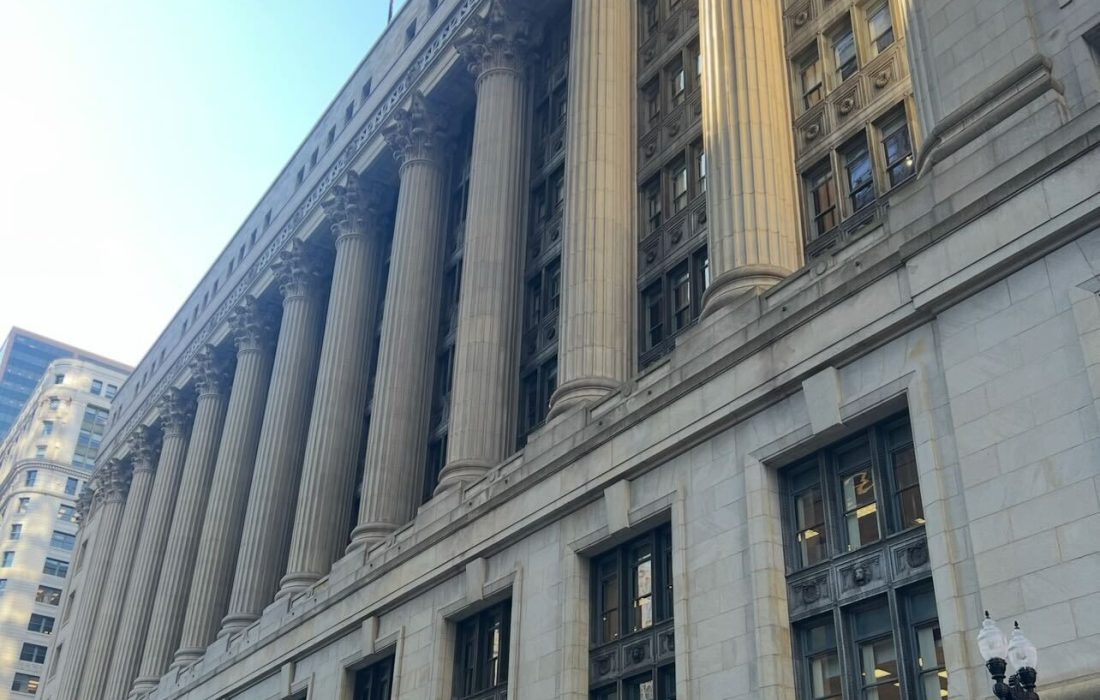Staff Writer Ryan Maddigan supports city council’s structure.
Chicago’s City Council Creates Community
With a population over 2.7 million, Chicago is the third largest city in the U.S. and one of the most ethnically diverse metropolises in the country. As a result of Chicago’s rapid growth after its founding, its city management structure executed loose procedures and fast deals that expedited the dispersal of government resources, according to the Encyclopedia of Chicago.
During the city’s expansion, everyone needed something. Businesspeople and entrepreneurs needed permits passed. Developers needed zoning laws revised. People needed parks and subway lines built. Children needed access to education and sanitation. The lives of millions in post-fire Chicago were progressing — and the city needed to catch up or be left in the dust.
Though the structure of the city government has changed since 1923 when there were six wards each with two alderman, its emphasis on neighborhood representation has remained.
Each of Chicago’s 50 alderpeople represents roughly 50,000 Chicagoans, according to the Center of Effective Government at the University of Chicago. Compared to New York and Los Angeles, where city council members represent 166,000 and 256,000 constituents, respectively, Chicago’s alderpeople have much smaller districts, bringing them closer to the people they represent.
This was — and continues to be — especially important for the city’s immigrant communities.
In the 20th century, with Puerto Ricans settling in Humboldt Park and Irish immigrants making Bridgeport their own, it was important for elected officials to understand the needs of the specific community. This remains true today. As a result, the voting lines in Chicago politics are often fluid and unlikely to fall along party or demographic lines.
Though officially non-partisan public servants, Chicago’s alderpeople can organize themselves into caucuses, such as the Progressive Caucus, the Black Caucus and the LGBTQ+ caucus. These caucuses can signal commonalities between alders and show the diverse spectrum of people they represent.
A recent example of how alderpeople represent even the most niche interests of their community in spite of caucus membership is the recent attempt to ban fur sales in Chicago.
With 23 cosponsors in the licensing committee, the ordinance to ban the sale of furs in Chicago seemed promising. But outspoken criticism by Ald. Stephanie Coleman (16th), who knows firsthand the cultural significance of fur in the African American community, garnered enough resistance for the ordinance to fail.
Aligning themselves with both the Progressive and Black Caucuses, Ald. Desmond Yancy (5th) and Ald. Jeanette Taylor (20th) valued feedback from their communities over any caucus allegiance.
Just like how every U.S. senator looks in the mirror and sees the future president, so too do many alderpeople see a future mayor. This isn’t surprising when considering the direct influence they have on their ward. While the initial goal was streamlining government resources, these localized powers have become susceptible to political machine manipulation.
Much of the top-down operations of the past — epitomized from 1954 to 1976 under Mayor Richard J. Daley — that controlled Chicago for decades relied on corruption. But the non-corrupt tenets of the machine, such as voter turnout and community outreach, are crucial to efficient governing.
Alderpeople are strongly incentivized to improve the lives of the constituents in their ward within a four year timeframe, otherwise it’s likely they’ll be voted out.
Though the current political apparatus doesn’t operate like it has in the past — when there was blatant exchange of patronage for votes — there’s an understanding amongst city council members that their job is on the line when considering the needs of the community.
For example, if a small business pushed out of their lease to make way for a large apartment complex launches a campaign to oust their alderperson for allowing the rezoning to progress, local pressure may be enough for the ward to turn on their elected official.
Chicago politics can be notoriously dirty, and its council isn’t perfect. Coalition-building can be difficult with such varied communities, ward maps are susceptible to gerrymandering and aldermanic staff are often too few in number to fully support the needs of their wards. But rarely is the public able to see the inner workings of the democratic process as intimately as they can in Chicago.
Unlike your state senator or assemblyperson sequestered in Springfield Ill., you’re likely to know the name of your alderperson. Maybe you’ve even met them once or twice. Maybe you see them at the store or riding their bike around the community.
Like all public officials, alderpeople may have ambition — but they’re still some of the most accessible elected officials you’ll ever interact with.
Correction: A previous version of this article misattributed the article’s featured image to Ryan Maddigan. The article was updated April 3, 2025 to credit Bella Adams as the photographer.
-

Ryan is a fourth-year student majoring in history with a minor in global studies. He enjoys writing satire and opinions about societal movements. Originally from Los Angeles, Maddigan's time as an intern for the 44th Ward — alongside his experience in Loyola's Writing Center — makes him accustomed to the Loyola and Chicago cultures. For fun he likes to hangout with his siblings and build Legos.
View all posts
Topics
Get the Loyola Phoenix newsletter straight to your inbox!


